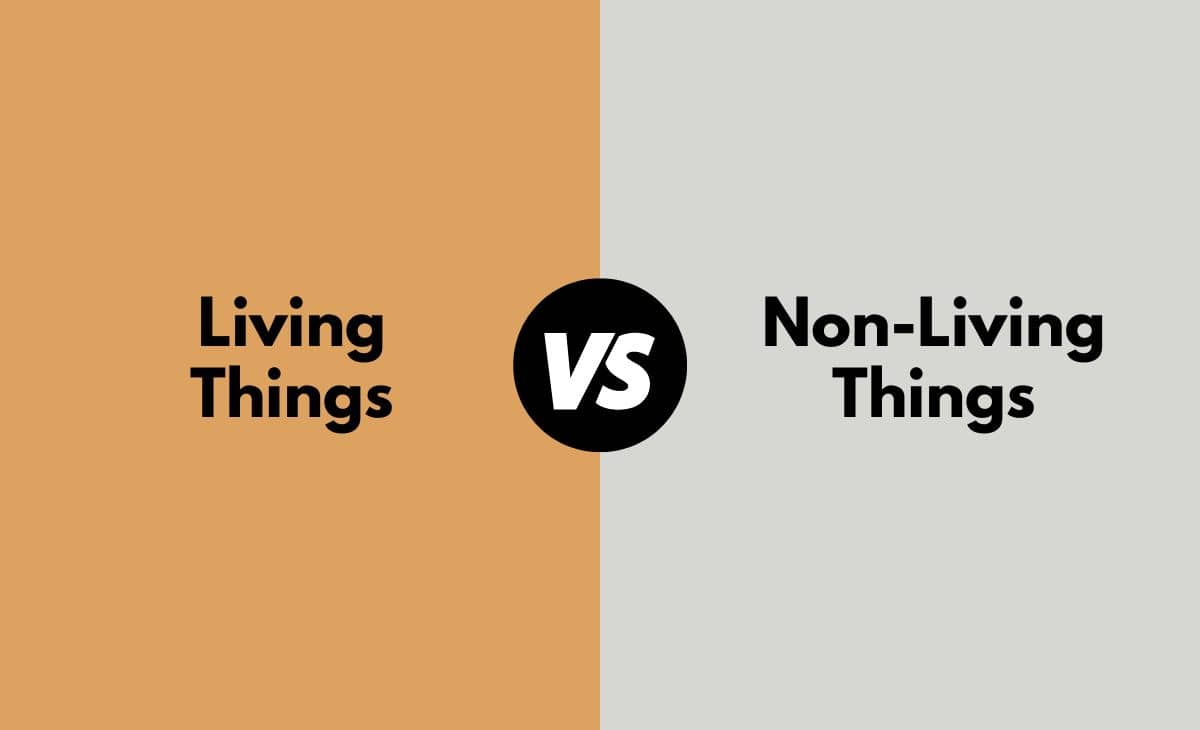Introduction
To know the difference between living and non-living things, it is essential to know how imperative life itself is. A major component surrounding us in observing life is how one can clearly distinguish an animate object from an inanimate one—a person from a pen or a plant from its pot. In fact, wherever there is life, growth is often accompanied. This is why one can see growth in plants even though they might seem lifeless. Since now it is clear how life and growth form two major differences between living and non-living things, it is time to move forward and address the query.
Difference Between Living and Non-living Things in Tabular Form
| Basis | Living Things | Non-living Things |
| Definition | Living things are characterized by life and growth. To carry the process of life, their cells/organs work hard. | Non-living things are characterized by a lack of life and growth. These things do not have any cell/cell structure. |
| Movement | Living things can be distinguished from their movement, whether it is noticeable or not visible to the naked eye. | Since non-living things have no cells and no growth, one can observe a lack of movement in them. |
| Consciousness | Living things have the ability to sense the forces around them, which makes them react. | Non-living things cannot sense the forces surrounding them, and hence, they cannot react. |
| Dependence | Living things are highly dependent on the elemental forces of nature to survive. They need air, water, and food to keep on living. | Non-living things are not dependent on the elemental forces of nature. |
| Energy and Life Span | Living things, to grow and evolve, need energy. They are also characterized by a certain life span. | Non-living things do not need energy since there’s no movement in them. They do not have any lifespan since there’s no life in them. |
| Will to Live | Living things are often distinguished by a desire to live. | Non-living things, since they lack life itself, do not possess any will to live. |
| Examples | Some examples of living things are animals, plants, bacteria, insects, and birds. | Some examples of non-living things are tables, cars, doors, clothes, and shoes. |
What are Living Things?
Living things, also known as animate objects, contain a cell or a complex cell structure that helps them grow and evolve. These animate objects need the elemental forces of nature to survive, be it water, air, or fire. It is only through these elemental forces of nature that living things obtain energy to grow, evincing the consciousness that they possess. One major characteristic of living things is their desire to live and thrive even in uncertain circumstances.
Here are some examples of living things that might help you to better understand the concept: trees, fungi, organisms, mammals, birds, reptiles, bacteria, fish, and many more!
What are Non-living Things?
As opposed to living things, non-living things are characterized by a lack of cells or a cell structure. Since these non-living things, also known as inanimate objects, have no life, one can see no movement or growth in them. Non-living things do not have any dependency on the elemental forces of nature because they have no use for energy. Moreover, inanimate objects do not have any consciousness and cannot get any reaction from an external stimulus. And most importantly, since they lack life, they do not possess any will to live or thrive.
Some examples of non-living things are doors, cupboards, textbooks, mirrors, chairs, beds, walls, curtains, pots, floors, and many more.
Difference Between Living and Non-living Things in Points
The difference between living and non-living things can be better grasped by going through the following points.
- In simple terms, living things can be easily distinguished from non-living things because while the former is characterized by life and growth, the latter lacks both.
- Living things need the support of the elemental forces of nature to survive, grow, and evolve. On the other hand, non-living things do not need the support of air or water because they do not grow or evolve.
- Living things possess a consciousness that helps them react when an external stimulus is applied. However, non-living things do not have a conscious and do not react to any external stimuli.
- Living things contain cells or a cell structure that helps them make use of energy, which further helps in their metabolism. Non-living things, on the other hand, do not have a cell structure and require no energy for metabolism.
- The will to live further distinguishes living things from non-living things. While the former possess this desire to live and thrive in uncertain circumstances, the latter cannot have this because they have no consciousness or life.
- Some examples of living things include mammals, birds, bacteria, reptiles, and plants, among many others. Some examples of non-living things are battery, watch, keys, box, plastic, comb, spectacles, and clothes, among many others.
Conclusion
To conclude, it is nothing but a simple task to differentiate between living and non-living things. While it is obvious that the naked eye cannot see whether an object contains a cell structure or not, there are other factors through which one can easily categorize objects as living or non-living. These factors include movement, growth, consciousness and reaction, and life span!

